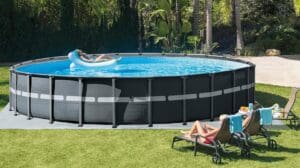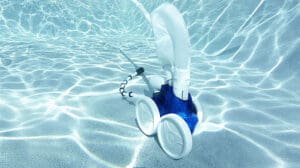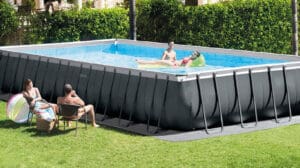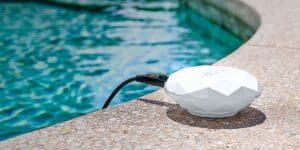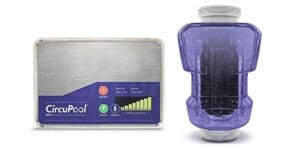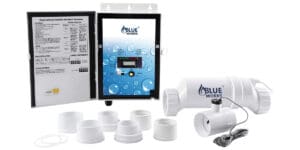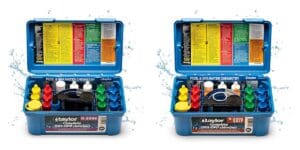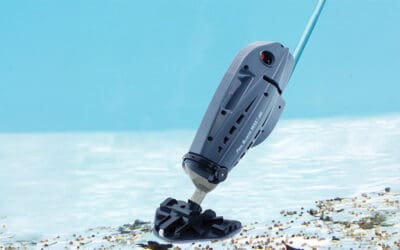Are you wondering if there’s a way to finally conquer the algae that plagues your pool? The battle against algae growth can be relentless, but fear not – there are effective strategies to help you reclaim your pool’s pristine clarity. Understanding the root causes of algae infestations and implementing targeted prevention techniques is crucial to maintaining a sparkling oasis for your enjoyment. Stay tuned as we unveil key insights and practical tips to combat algae and restore your pool water to its crystal-clear state.
Key Takeaways
- Proper maintenance and balanced chemicals prevent algae growth.
- Identify algae types for targeted treatment and effective results.
- Regular upkeep of filters, pumps, and skimmers ensures clear pool water.
- Implement preventive strategies like algaecide use and weekly shocking for algae-free pools.
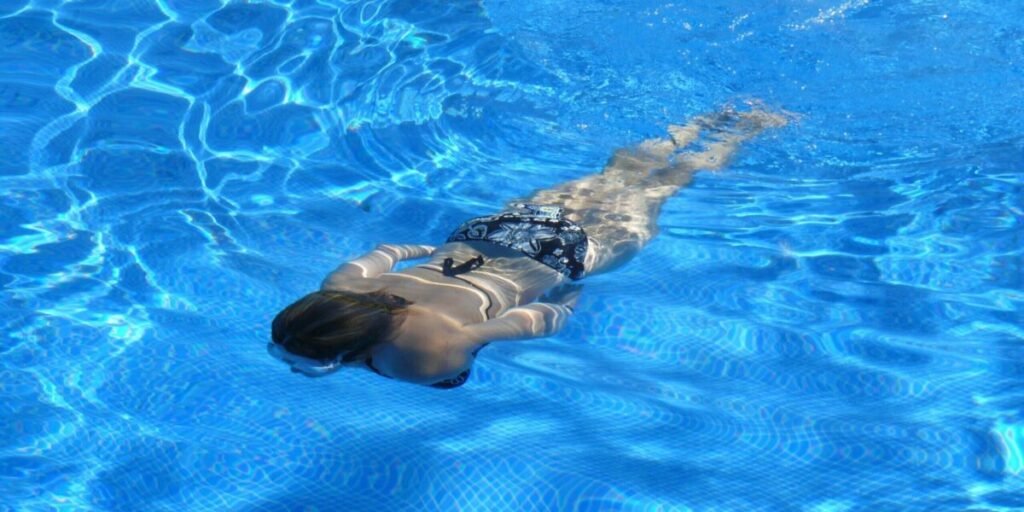
Identifying Algae Types in Pools
Identifying different types of algae in pools is crucial for effective treatment and maintenance. Various types of algae, such as green, black, yellow, and pink algae, can plague your pool. By understanding the specific types of algae present, you can tailor your treatment approach for better results. Green algae are typically responsible for that unsightly green tint in your pool water, while black algae require specialized chemical treatments due to their strong attachment to surfaces. Yellow and pink algae are less common but still require proper identification for targeted eradication. By accurately identifying the types of algae in your pool, you can take the necessary steps to ensure a clean and healthy swimming environment.
Causes of Algae Growth
Algae growth in pools is often triggered by a combination of factors, including poor maintenance practices and imbalanced chemical levels. Neglecting proper pool care routines can create an environment conducive to algae proliferation. When chlorine levels dip too low, algae find a welcoming home in your pool. Inadequate filtration and circulation also contribute to algae growth, allowing spores to settle and multiply. Even small imbalances in pH and alkalinity can tip the scales in favor of algae. To combat algae effectively, focus on algae prevention through consistent maintenance and balanced chemical levels. Regularly brushing and vacuuming, along with proper circulation and the use of algaecide, are essential steps in keeping algae at bay.
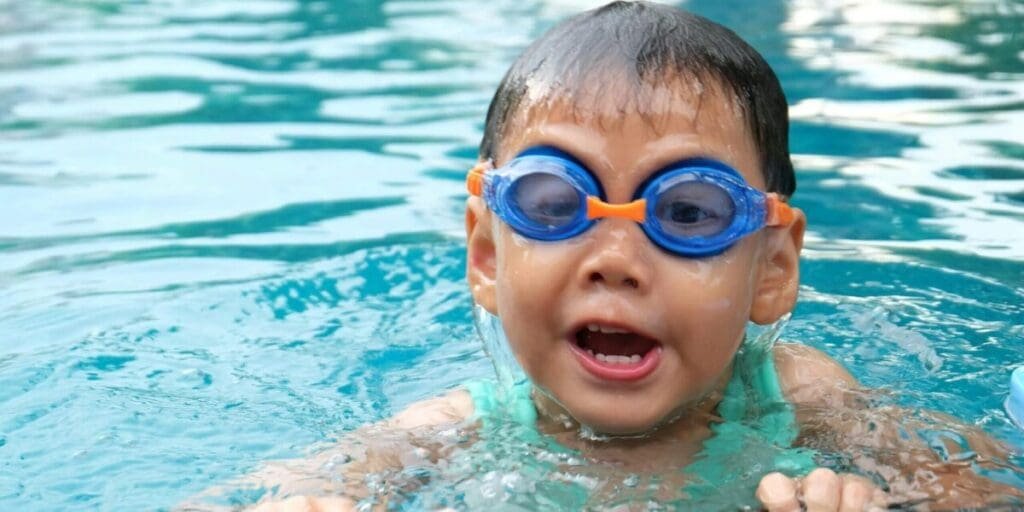
Importance of Regular Pool Maintenance
Regularly maintaining your pool is crucial for ensuring water quality and preventing issues like algae growth. Proper equipment care, such as regular cleaning of filters, pumps, and skimmers, is essential to keep your pool water clear. Maintaining the correct water balance by monitoring pH, alkalinity, and sanitizer levels is key to preventing algae from taking hold. Additionally, ensuring proper water circulation through regular pump operation helps in distributing chemicals evenly and preventing stagnant water where algae thrive. By staying on top of these maintenance tasks, you can significantly reduce the risk of algae growth and other water quality issues, ultimately saving time and effort in the long run.
Steps for Treating Pool Algae
To effectively treat pool algae, ensure proper water levels and chemical balance in your pool. Achieving algae eradication and water clarity requires precise steps:
- Test Chemical Levels: Use a reliable test kit to check chlorine, pH, and alkalinity levels.
- Apply Algaecide: Choose a suitable algaecide and follow manufacturer instructions for application.
- Scrub and Vacuum: Thoroughly brush and vacuum all pool surfaces to remove algae debris and prevent regrowth.
Strategies for Preventing Algae
To prevent algae growth in your pool effectively, it is essential to maintain proper water balance, circulation, and equipment upkeep consistently. Algae prevention tactics rely on regular maintenance of filters, pumps, and skimmers to ensure optimal functioning. Effective algae control involves maintaining the right chemical balance in the water and using algaecide as a preventive measure. Additionally, weekly shocking of the pool, along with consistent brushing and vacuuming, plays a crucial role in deterring algae growth. By implementing these strategies diligently, you can create an environment in your pool that is inhospitable to algae, ensuring clear and pristine water for your enjoyment. Consistent care and attention are key to successful algae prevention.
Algae Removal Techniques
When tackling algae in your pool, start by ensuring proper water levels and chemical balance. To effectively remove algae and restore crystal-clear water, follow these expert techniques:
- Thorough Cleaning: Clean pool filters and brush all surfaces meticulously to eliminate algae spores.
- Shock Treatment: Shock the pool appropriately to kill algae, test water quality, apply algaecide, and brush again for a comprehensive removal process.
- Continuous Maintenance: Maintain water balance, circulation, and use algaecide regularly to prevent future algae growth.

Maintaining Clean Pool Water
Ensure your pool’s water remains clear and inviting by implementing effective maintenance practices. Utilize efficient filtration methods to keep debris and contaminants out of the water. Regularly clean and backwash your pool filter to maintain optimal filtration. Consider installing algae-resistant surfaces to prevent algae growth and make cleaning easier. Surfaces like fiberglass, vinyl, and certain types of tiles discourage algae adhesion. Additionally, ensure proper water chemistry by monitoring and balancing pH, chlorine, and alkalinity levels. Consistent circulation with a well-maintained pump and skimmer also aids in preventing algae buildup. By combining these practices, you can enjoy a sparkling clean pool that is free from algae and other impurities.
Final Thoughts
Now that you have learned about the types of algae, their causes, treatment steps, and prevention strategies, you are equipped to effectively battle algae in your pool. By staying on top of regular maintenance, balancing water chemistry, and utilizing algaecide when needed, you can enjoy a crystal-clear pool all season long. Remember, a clean pool not only looks great but also promotes a healthy swimming environment for you and your family.
Questions & Answers

Can Using a Pool Cover Help Prevent Algae Growth in Pools?
Using a pool cover for your pool maintenance regimen can definitely aid in preventing algae growth. Cover benefits include blocking sunlight, which algae need for photosynthesis. By keeping out debris, a cover reduces the organic matter that algae feed on. This proactive step helps maintain proper water balance and reduces the risk of algae infestations. Regular use of a pool cover, alongside routine cleaning and chemical upkeep, can significantly deter algae growth in your pool.
Are There Any Natural Remedies or DIY Solutions for Treating Pool Algae?
When dealing with pool algae, natural remedies and DIY solutions can be effective and cost-friendly. Eco-friendly alternatives include using baking soda, vinegar, or hydrogen peroxide to combat algae growth. Scrubbing with a mixture of baking soda and water can help remove algae from surfaces. Additionally, maintaining proper water balance and circulation, along with regular brushing and vacuuming, are key in preventing and treating algae in your pool.
How Long Does It Typically Take to Completely Remove Algae From a Pool?
Removing algae from a pool can take around 1 to 2 weeks, depending on the severity of the infestation. To effectively combat algae, you must diligently follow treatment methods. Testing and balancing chemicals, shocking the pool, applying algaecide, and consistent brushing and vacuuming are key steps in the algae removal timeline. Regular maintenance and proper water balance are crucial for preventing future algae growth. Consistency and thoroughness are essential for a clear pool.
Can Algae Growth in Pools Be Harmful to Swimmers’ Health?
Algae prevention is crucial as algae growth in pools can pose health risks to swimmers. Algae can harbor harmful bacteria, leading to skin irritations and infections. Proper maintenance, water balance, and use of algaecide help prevent algae proliferation and protect swimmers’ health. Regular cleaning, circulation, and monitoring ensure a safe swimming environment. Stay proactive to avoid potential health issues associated with algae-infested pool water.
Is It Possible for Algae to Return After Treatment, and if So, How Can This Be Prevented?
To prevent algae from coming back post-treatment, maintain proper water balance, clean filters, and regularly shock the pool. Keep up with brushing and vacuuming to stop algae growth. Consistent algaecide use and good circulation are key. When treating, test chemical levels, shock the pool, scrub, vacuum, apply algaecide, and brush again. Follow these steps diligently for effective algae prevention and to keep your pool water clear.





